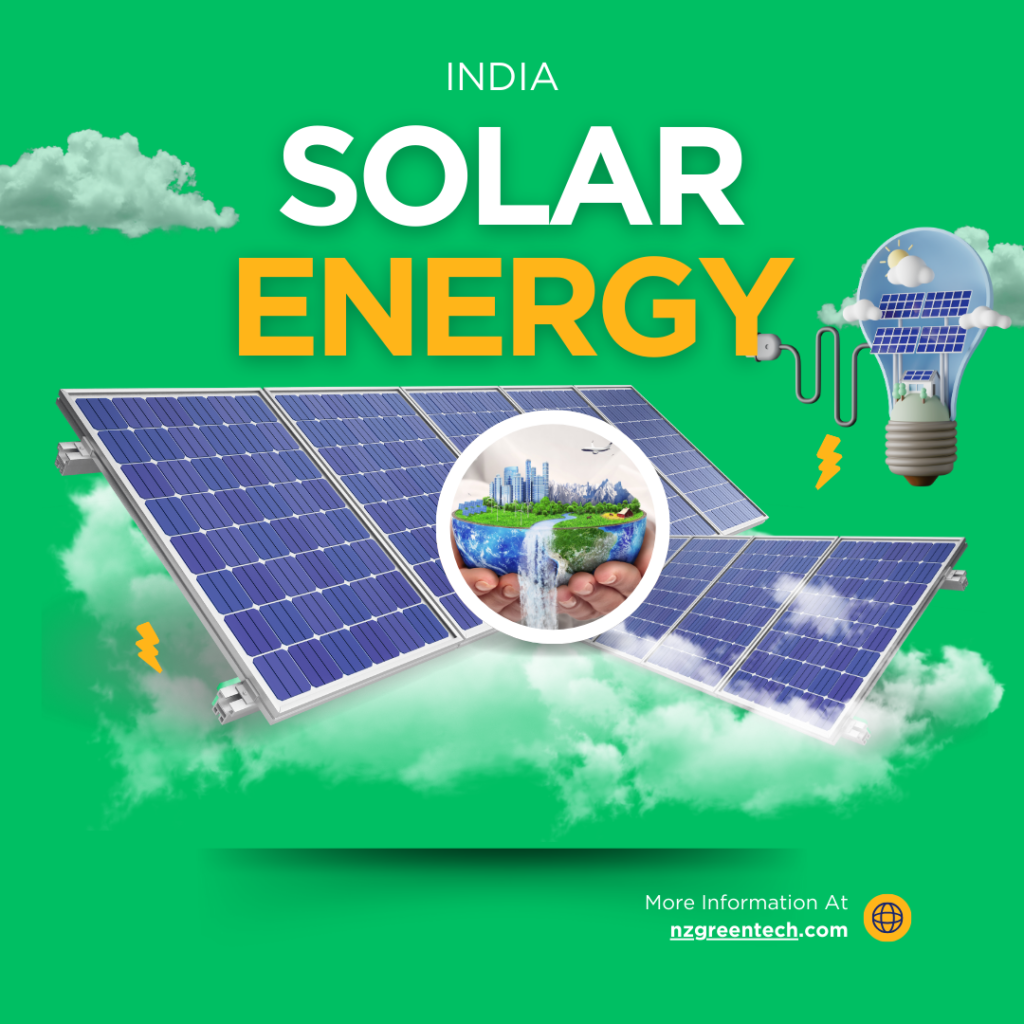India has been making remarkable strides in the solar energy sector, solidifying its position as a global leader in renewable energy. With an ambitious target of achieving 500 GW of non-fossil fuel capacity by 2030, solar power has emerged as a cornerstone of India’s energy transition. Let’s dive into the latest trends and news shaping this dynamic industry.

Key Trends in India’s Solar Energy Sector
Record Capacity Additions
India has been steadily increasing its solar capacity, with over 70 GW of installed capacity as of late 2024. The government’s push toward renewable energy through schemes like the PM-KUSUM (for farmers) and the Solar Rooftop Program is accelerating this growth.
Focus on Domestic Manufacturing
The Production-Linked Incentive (PLI) scheme for solar PV modules has boosted domestic manufacturing. Several Indian companies are now producing high-efficiency solar panels, reducing reliance on imports from China.
Rise of Floating Solar Projects
Floating solar farms are gaining traction in India as they address land scarcity issues. Projects like the 600 MW floating solar park on the Omkareshwar Dam in Madhya Pradesh highlight this trend.
Corporate Investments in Solar Energy
Private players such as Reliance Industries, Tata Power, and Adani Green Energy are heavily investing in solar projects. Their focus ranges from utility-scale solar parks to decentralized solar solutions.
Solar-Plus-Storage Solutions
With advancements in battery technology, solar-plus-storage solutions are becoming increasingly viable. These solutions ensure a steady power supply even when the sun isn’t shining, addressing intermittency challenges.
Latest News Solar Energy
- India Surpasses 70 GW Solar Capacity: The country recently crossed this milestone, marking a significant achievement toward its renewable energy goals.
- Global Investment Surge: According to a recent IRENA report, India attracted $10 billion in solar energy investments in 2024, underscoring its appeal as a renewable energy hub.
- New Solar Parks Announced: Rajasthan and Gujarat are set to host two new mega solar parks, each with over 2 GW capacity. These projects will drive local employment and enhance energy security.
- Government Boost to Rooftop Solar: The Ministry of New and Renewable Energy (MNRE) has announced increased subsidies for residential rooftop solar systems, making clean energy more accessible.
Why Solar Energy is Crucial for India
India’s solar push is not just about meeting energy demands; it’s a multi-faceted solution to combat climate change, reduce energy imports, and promote economic growth. The shift to solar also aligns with India’s commitments under the Paris Agreement, helping the country lead by example in sustainable development.
FAQs:
What is the current solar energy capacity in India?
As of late 2024, India has surpassed 70 GW of installed solar capacity, with ambitious plans to achieve 280 GW by 2030.
What are floating solar farms, and why are they important?
Floating solar farms are installations on water bodies, such as reservoirs and lakes. They are important because they save land, reduce water evaporation, and improve energy generation efficiency.
How does the PLI scheme benefit India’s solar industry?
The PLI scheme incentivizes domestic manufacturing of solar PV modules, reducing dependence on imports and boosting local industries.
What role do private companies play in India’s solar growth?
Private companies like Reliance Industries and Adani Green Energy are investing in large-scale solar projects, driving innovation, job creation, and capacity expansion.
How can I install a solar rooftop system at my home?
You can apply for a rooftop solar system through the MNRE portal or contact an approved vendor. Subsidies are available for residential installations to make them more affordable.
